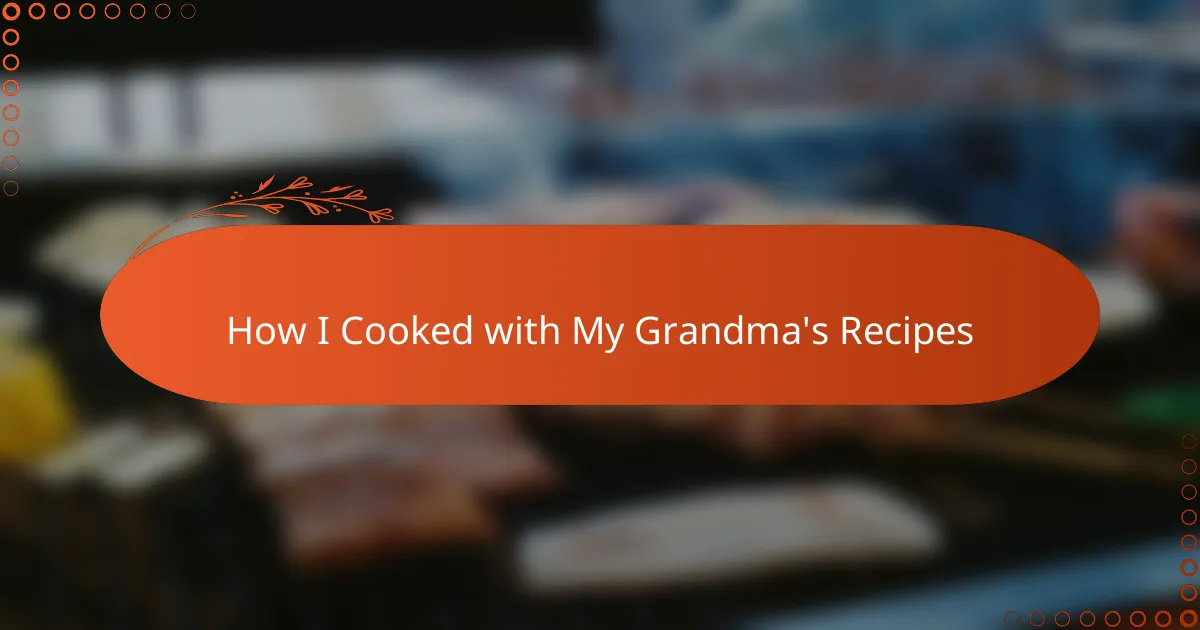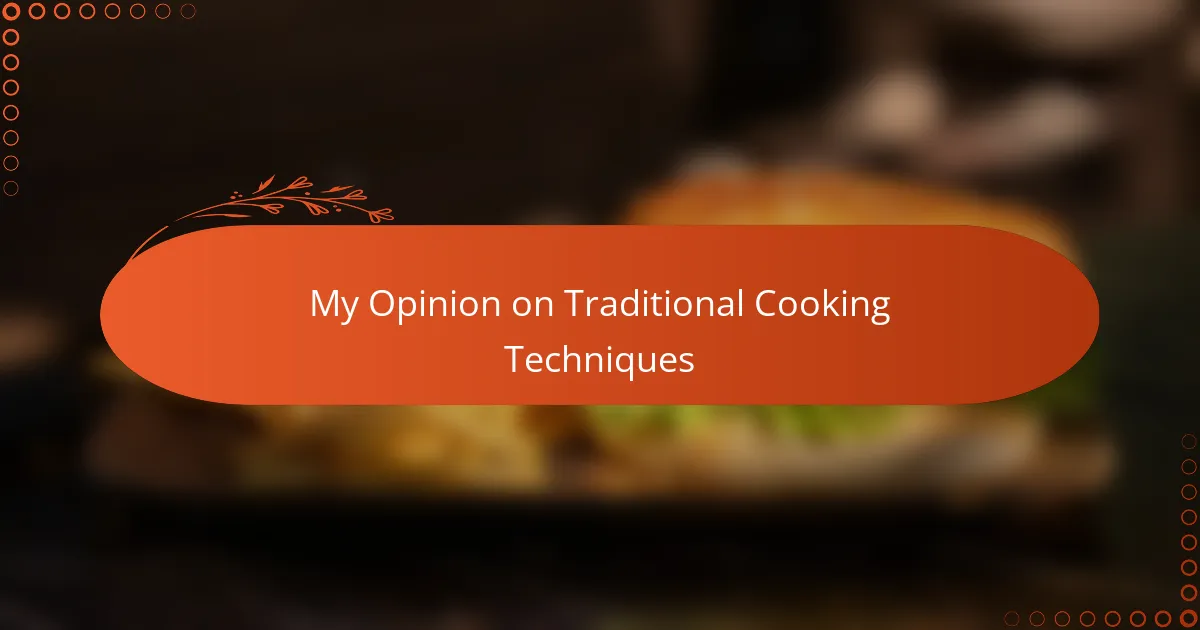Key takeaways
- Homesteading cooking emphasizes self-sufficiency and tradition, using fresh, home-grown ingredients to create meaningful meals.
- Traditional techniques like hand-kneading dough and slow simmering connect cooks to their ancestors and foster mindfulness in the cooking process.
- Adapting old recipes encourages creativity while honoring family traditions, allowing for personal expression within historical culinary practices.
- Sharing and preserving family recipes fosters connections across generations, enriching family bonds and celebrating heritage through cooking together.
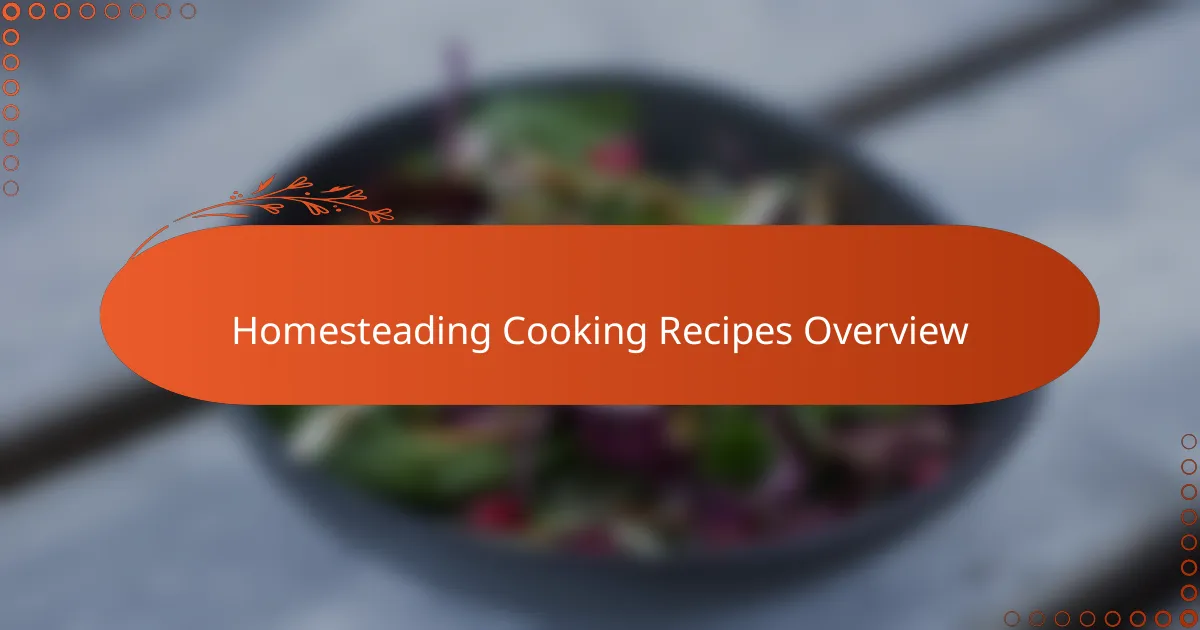
Homesteading Cooking Recipes Overview
Homesteading cooking recipes are more than just instructions; they’re a bridge to simpler times when meals were made from scratch and ingredients were grown in your own backyard. I often think about how these recipes connect us to our ancestors, bringing their daily lives and traditions right to our kitchen tables. Have you ever wondered what it feels like to taste a meal crafted exactly as your grandmother did, using nothing but fresh, honest ingredients?
One of the most rewarding aspects of homesteading cooking is the way it encourages a deep sense of resourcefulness and creativity. When I follow these recipes, I’m reminded that cooking isn’t just about eating—it’s about preserving history and nurturing family bonds. The process taps into a rhythm that’s both comforting and empowering, especially when you realize the endless possibilities with what you can grow and forage yourself.
What stands out to me is how these recipes blend practicality with heartfelt tradition. They often call for staples like garden-fresh vegetables, homemade preserves, and hand-milled flours, painting a vivid picture of life rooted in self-sufficiency. Each dish carries a story, and cooking them feels like an invitation to slow down, savor memories, and create new ones along the way.
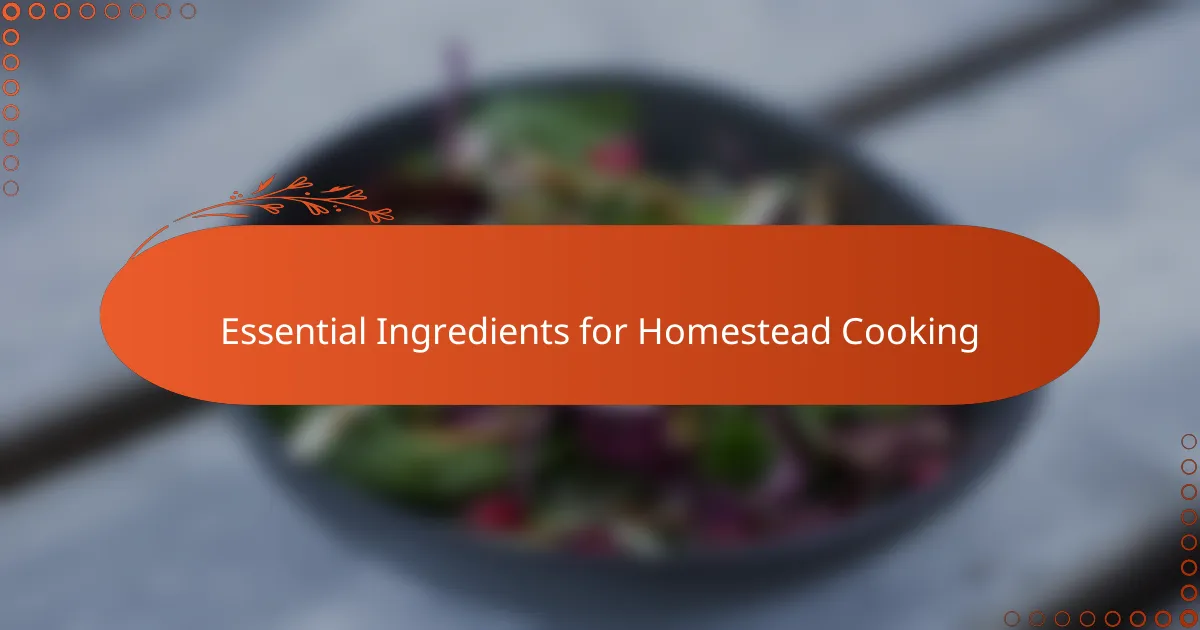
Essential Ingredients for Homestead Cooking
When I think about essential ingredients for homestead cooking, fresh eggs from my own hens always come to mind first. There’s something truly special about cracking open a farm-fresh egg—the yolk so rich and golden—that instantly transforms a simple recipe into something heartfelt and flavorful. Have you ever noticed how such small touches make a dish feel like home?
Another ingredient I can’t live without is flour that I’ve milled myself from grains grown on the property. It’s surprising how much difference freshly ground flour makes in baking, giving bread and biscuits an earthy, wholesome quality. Using these basics not only honors my grandmother’s way of cooking but also connects me to the land and the seasons, deepening the satisfaction behind every meal.
I often include homemade preserves or canned vegetables, which capture the essence of summer long after the harvest is gone. These pantry staples remind me of afternoons spent with my grandma, carefully sealing jars and sharing stories. Isn’t there something comforting about tasting sunshine from a jar on a cold winter day? Those are the little treasures that define homestead cooking for me.
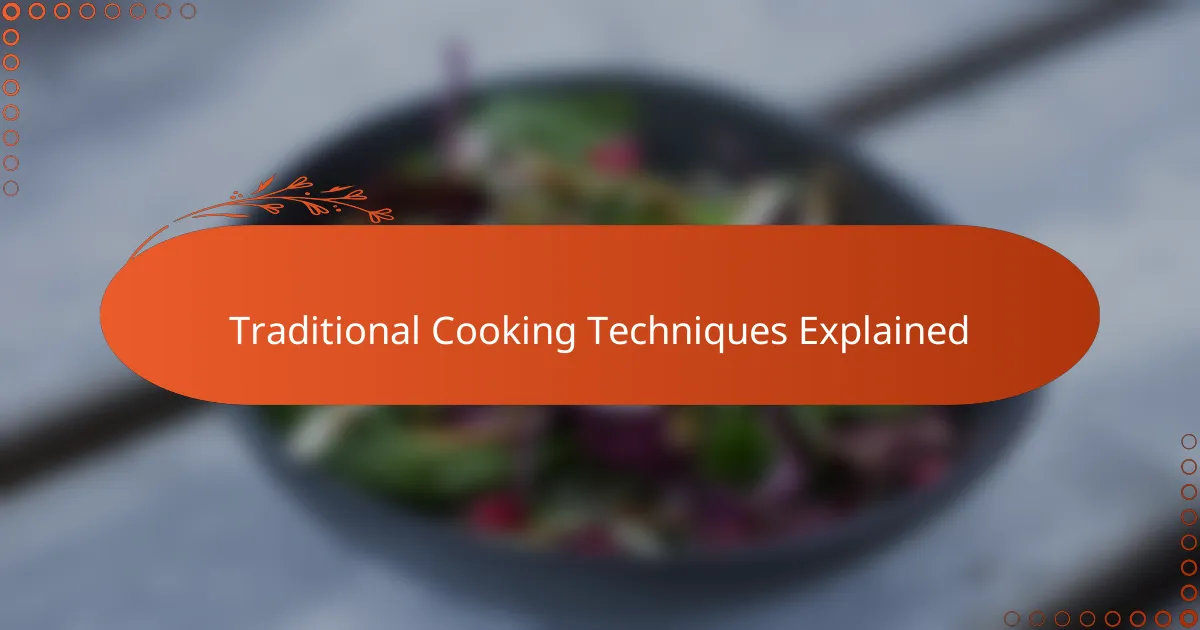
Traditional Cooking Techniques Explained
Traditional cooking techniques have a way of grounding me, especially when I trace the steps my grandma followed in her kitchen. Methods like slow simmering and open-fire roasting aren’t just about flavor—they’re about patience and respect for the ingredients. Have you ever noticed how letting a stew cook low and slow somehow infuses every bite with a comforting richness that’s hard to achieve any other way?
One technique that always stands out to me is hand-kneading dough. It’s a tactile experience that no machine can replicate, connecting me directly to the food and the generations before me. I remember sitting beside my grandma, feeling the dough change texture beneath my fingers—that simple act felt like a lesson in mindfulness and tradition all at once.
Smoking and curing meats also reveal how resourceful our ancestors were, preserving food to last through harsh seasons. As I try these methods myself, I realize it’s not just about survival; it’s about celebrating a deeper connection to the land and the cycles of the year. Have you ever wondered how such practices shaped the way communities gathered around food, sharing warmth and stories during cold winter nights?
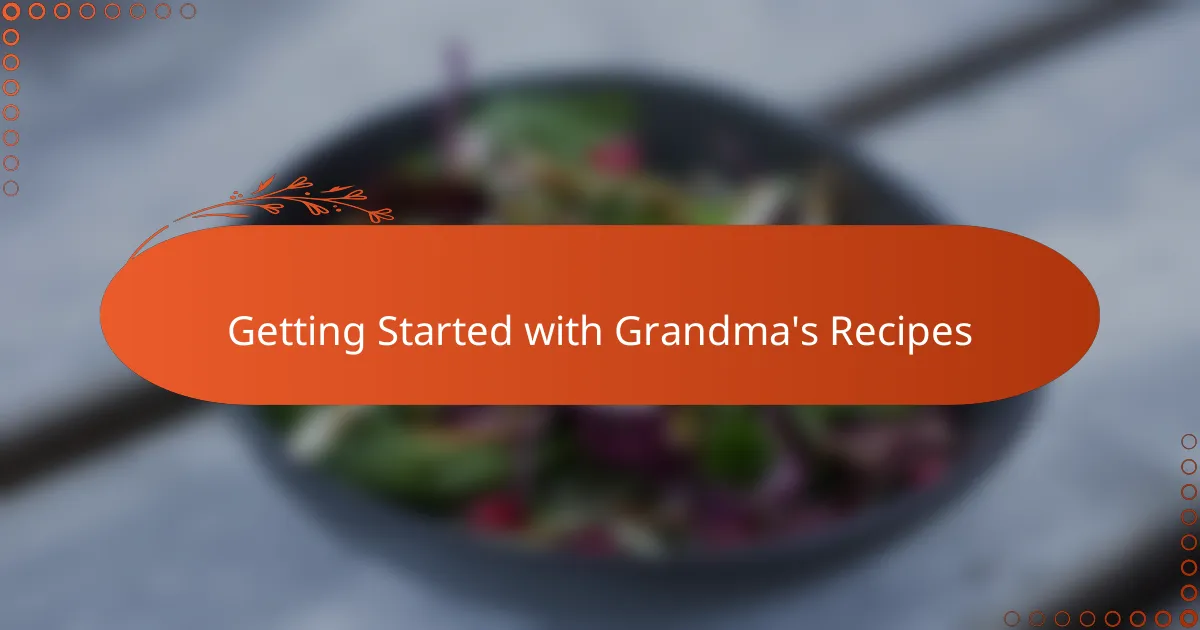
Getting Started with Grandma’s Recipes
Starting with Grandma’s recipes often means diving into a world where every ingredient has a story. When I first opened her worn, handwritten cookbook, I was struck by how much patience and love went into each step. Have you ever held a recipe so familiar it almost feels like a letter from the past?
What helped me begin was simply embracing the imperfections—the way measurements were often “a pinch” or “a handful” rather than exact numbers. It made me realize that cooking these recipes isn’t about precision but about intuition and tasting along the way. That’s when the process started to feel truly alive and personal.
I also found that gathering the right ingredients was like a ritual in itself. Whether it was picking fresh herbs from the garden or grinding flour by hand, these small acts invited me to slow down and honor the tradition behind each dish. Have you tried starting a meal by connecting with the ingredients first? It changes everything.
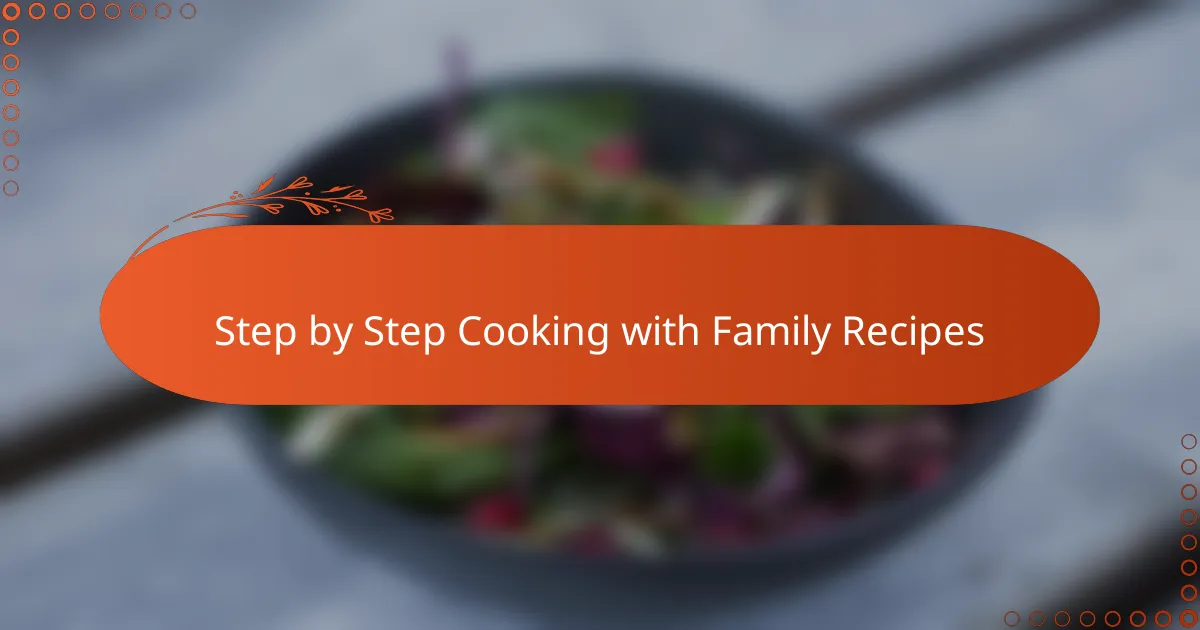
Step by Step Cooking with Family Recipes
There’s something truly special about following a family recipe step by step—it’s like walking alongside your grandmother in her kitchen. I remember how, at first, I worried about missing a detail or doing something “wrong,” but then I realized the real joy was in the process itself, not perfection. Have you ever caught yourself savoring not just the food, but the very act of creating it as your ancestors did?
Each step in a family recipe holds its own rhythm, often marked by simple instructions like “stir gently” or “cook until golden.” I found that paying close attention to these cues taught me patience and mindfulness, turning cooking into a meditative practice rather than a rushed task. Did you know that these small moments helped me feel deeply connected to my grandmother’s hands, even though she was miles away?
Sometimes, the most valuable part of cooking with family recipes is the conversation that bubbles up as you work. I’ve shared laughs, stories, and even a few kitchen mishaps while peeling potatoes or kneading dough, all guided by those cherished instructions passed down through generations. Isn’t it fascinating how a recipe can become a bridge, uniting past and present with every step?
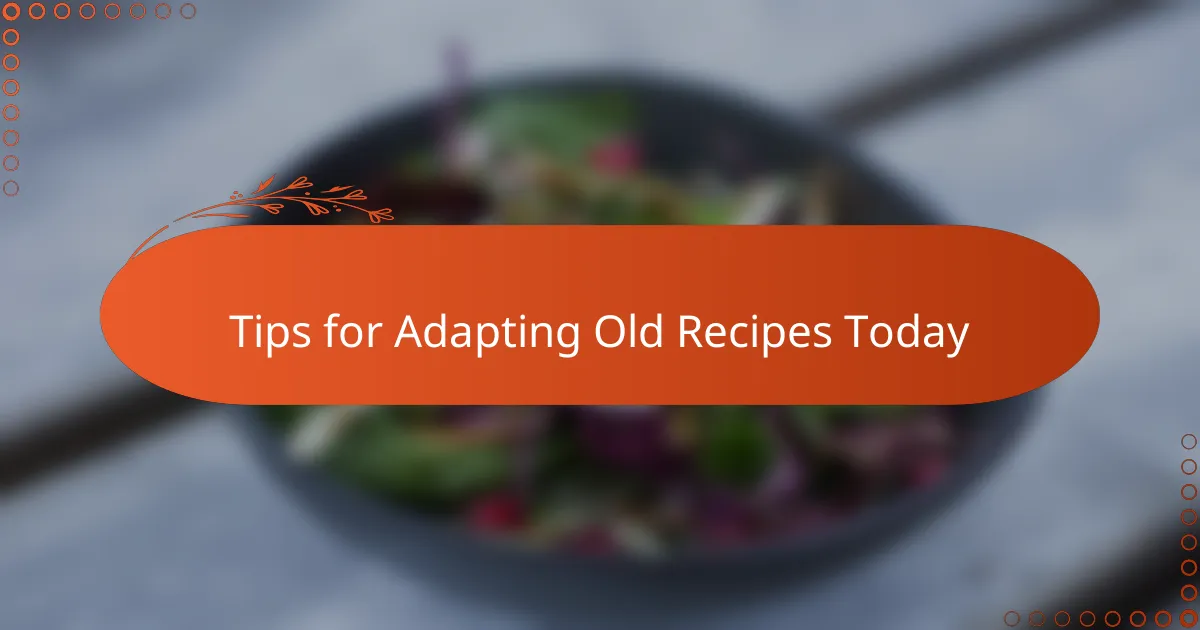
Tips for Adapting Old Recipes Today
Adapting old recipes can feel daunting, especially when some instructions seem vague or ingredients are no longer common. I’ve learned to treat these moments as invitations to experiment—like swapping out lard for butter or using modern sweeteners when cane sugar isn’t on hand. Have you ever surprised yourself by creating something new while trying to stay true to an old recipe’s soul?
One tip I hold dear is to start by understanding the flavors and textures the original recipe aimed for, then adjust cooking times or ingredient proportions to fit today’s kitchen tools and tastes. For instance, I once shortened my grandma’s long-simmered stew because my electric stove retains heat differently, but the dish stayed just as comforting and rich. Doesn’t it feel empowering to make traditions your own while honoring their roots?
Finally, patience is key. I remind myself that adapting historic recipes isn’t about strict adherence—it’s about connection. When measurements say “a pinch” or “a dash,” I embrace the freedom to taste and tweak, trusting my instincts. This mindset has helped me turn every attempt into a story worth sharing around the table. Have you found that kind of joyful flexibility when you experimented with your family’s recipes?
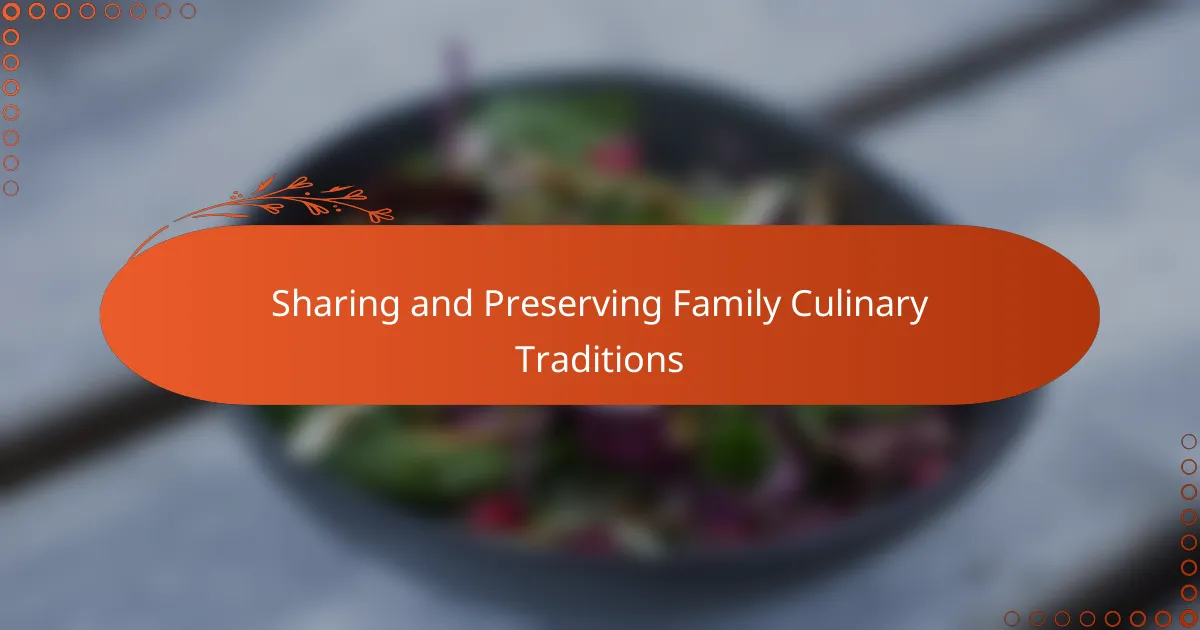
Sharing and Preserving Family Culinary Traditions
There’s a unique comfort in sharing family recipes that goes beyond the food itself—it’s about passing down pieces of our history. I remember the first time I cooked my grandmother’s apple pie, feeling as if I was holding a thread woven from years of love and tradition. Have you ever noticed how a simple dish can suddenly become a vessel for stories, laughter, and memories shared across generations?
Preserving these culinary traditions feels like a way of honoring those who came before us, keeping their spirit alive in our homes. Each time I recreate her recipes, I feel a little closer to my roots, as if the smells and flavors carry whispers of family gatherings long past. Isn’t it amazing how food can serve as both a connection to the past and a gift for future generations?
Sharing these recipes also invites others into the family circle, sparking curiosity and appreciation for the heritage behind each bite. When I teach a friend to make my grandma’s homemade preserves, I see how the act of cooking together creates bonds that transcend time and place. Have you experienced the joy of turning a recipe into a shared tradition that keeps growing with every generation?
